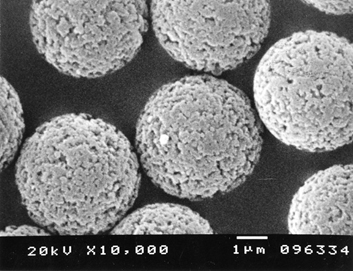GPC Column
We promise to support our clients with various organic/inorganic material R&Ds with utmost sincerity.
Koptri has a variety of GPC columns in possession for molecular weight measurement.
While the Silica-based C18 is the typical packing material in the HPLC column, GPC column utilizes a crosslinked polystyrene bead (divinylbenzene copolymer) as the packing material. To distinctively separate the molecular weights from low to high, it requires GPC columns with various pore sizes. There are many column products developed and commercialized, such as TSKgel, Shodex, PLGel, Styragel, Jordi, etc. Depending on the manufacturer, the packing materials will vary and it will directly affect the separation performance. Variety of pore sizes, durability of its pores, and the ability to solve the absorption problems between the polymer and the packing material would make the optimal column. Koptri has various columns from different manufacturers, and select appropriate column for each analysis depends on the type of the target polymer, molecular weight range, and the probability of column absorption.
Chemical Structure of HPLC and GPC packing particles

GPC column is a metal tube with approximately 150~300 mm in length and 4.5~7.5 mm inner diameter. The inner part of the column is filled with microscopic polymer gel particles (3~20㎛ bead) made by customized dispersion polymerization. Typical GPC column usually is about 30 cm in length, but nowadays 15 cm short columns are developed for faster analysis. The picture below shows the microscopic image of the particles within the column. This particle is a crosslinked polystyrene made by chemically crosslinking polystyrenes using divinylbenzene(DVB) and would be insoluble in an eluent; thus, the polymer particles inside the column will be swollen in the eluent. The particles are also manufactured to have micro pores (pore size of 50~106 Å) that resembles the surface of sponge, which allows polymers to permeate through the pores. Let’s take a look at the mechanism that allows the polymer to separate by its size in the GPC column.
Electron microscope image of beads inside the GPC column

GPC column separation mechanism

Like the image above, let's say that THF solvent is continuously passing through a particular GPC column and three types of polystyrene standards (Blue, Green, Red) with different molecular weight have been dissolved in THF solvent to pass through the GPC column. The column is filled with scores of micro-particles, and each particle surface has a pore size of 100 Å. Dissolved polymers will be eluted through the narrow space between the particles with the eluent. If the size of the polymer, the radius of random coil is larger than 100 Å (Blue polymer), it is difficult to penetrate deeply through the particles, and thus it will only move around the particles and elute swiftly due to the flow rate of the solvent. On the other hand, smaller size polymer (red polymer) with a radius of random coil smaller than 100 Å will penetrate through the particle deeply and experience greater residence time (retention time). The polymer will eventually elute out of the column due to the flow rate of the solvent but much slower than the others. In other words, the column can separate the polymers by its size due to the principle that large molecules elute first (faster retention time) and small molecules elute last (slower retention time). As a result, GPC can obtain a chromatogram that displays in order of blue, green, and red depends on their retention time.


